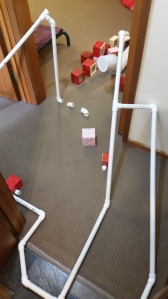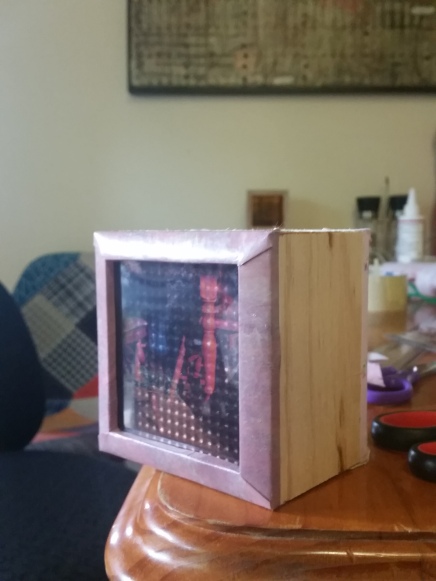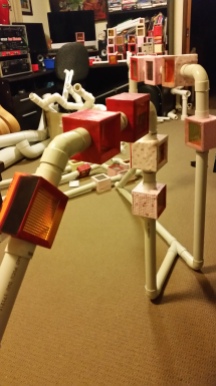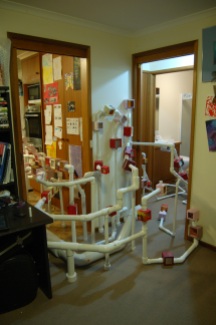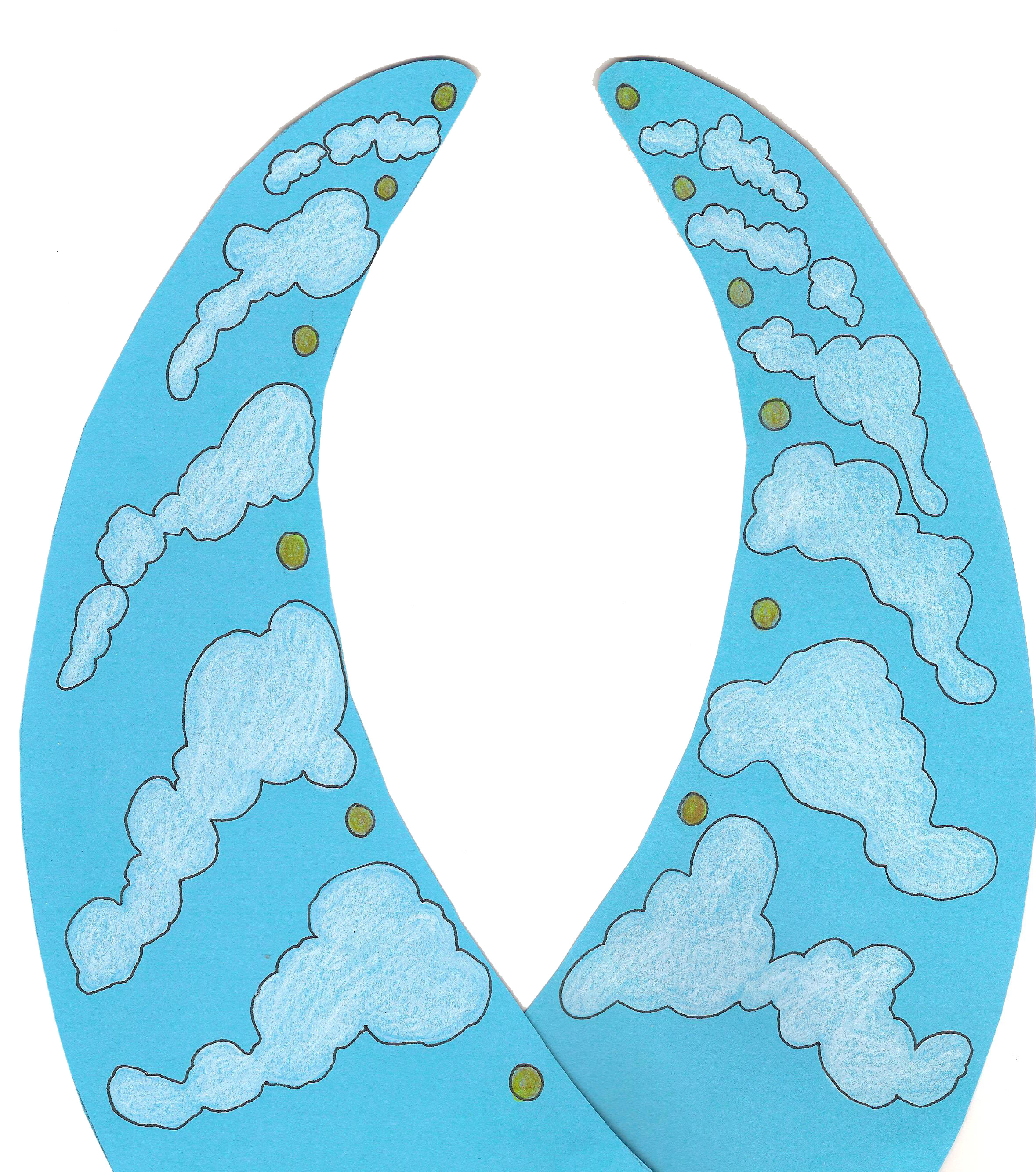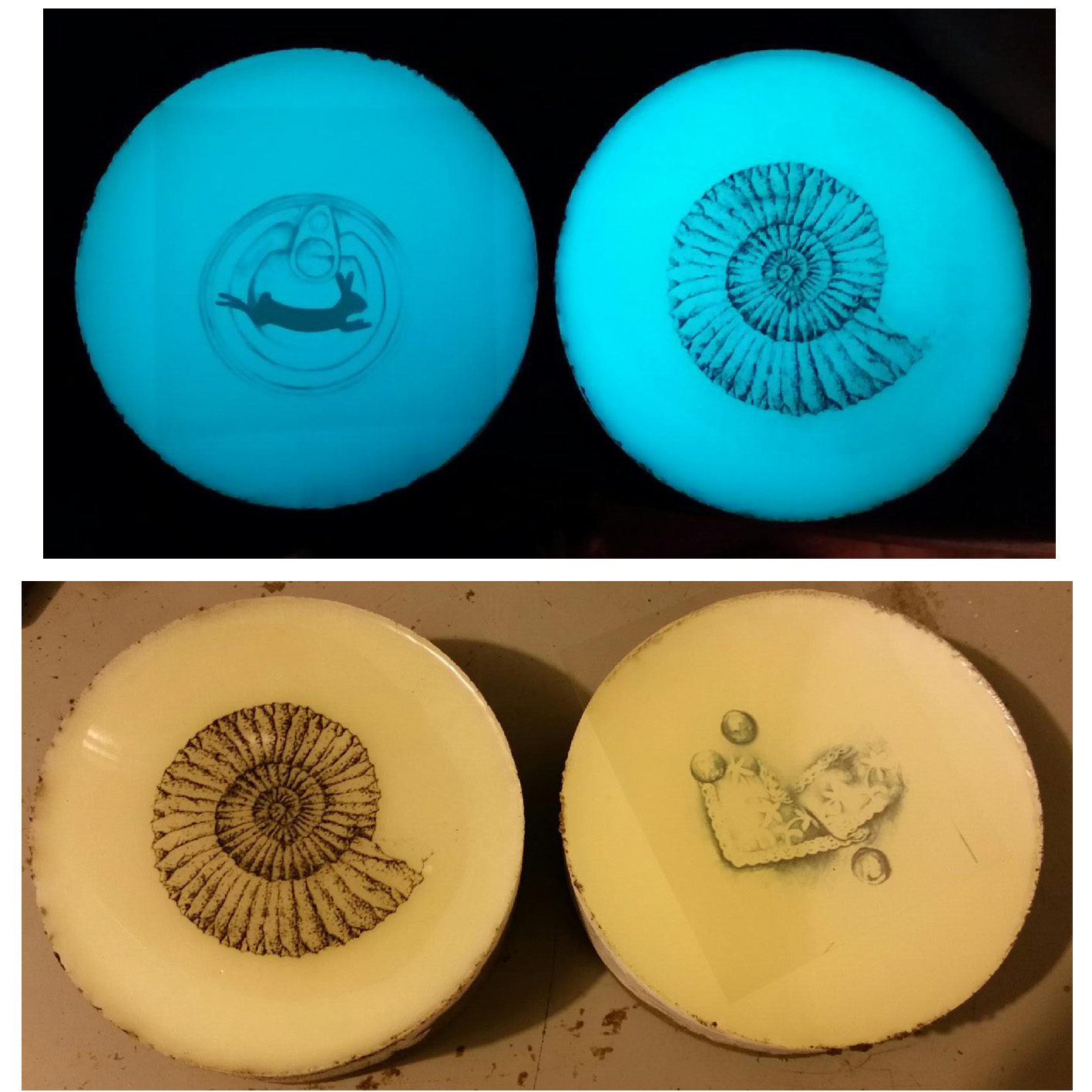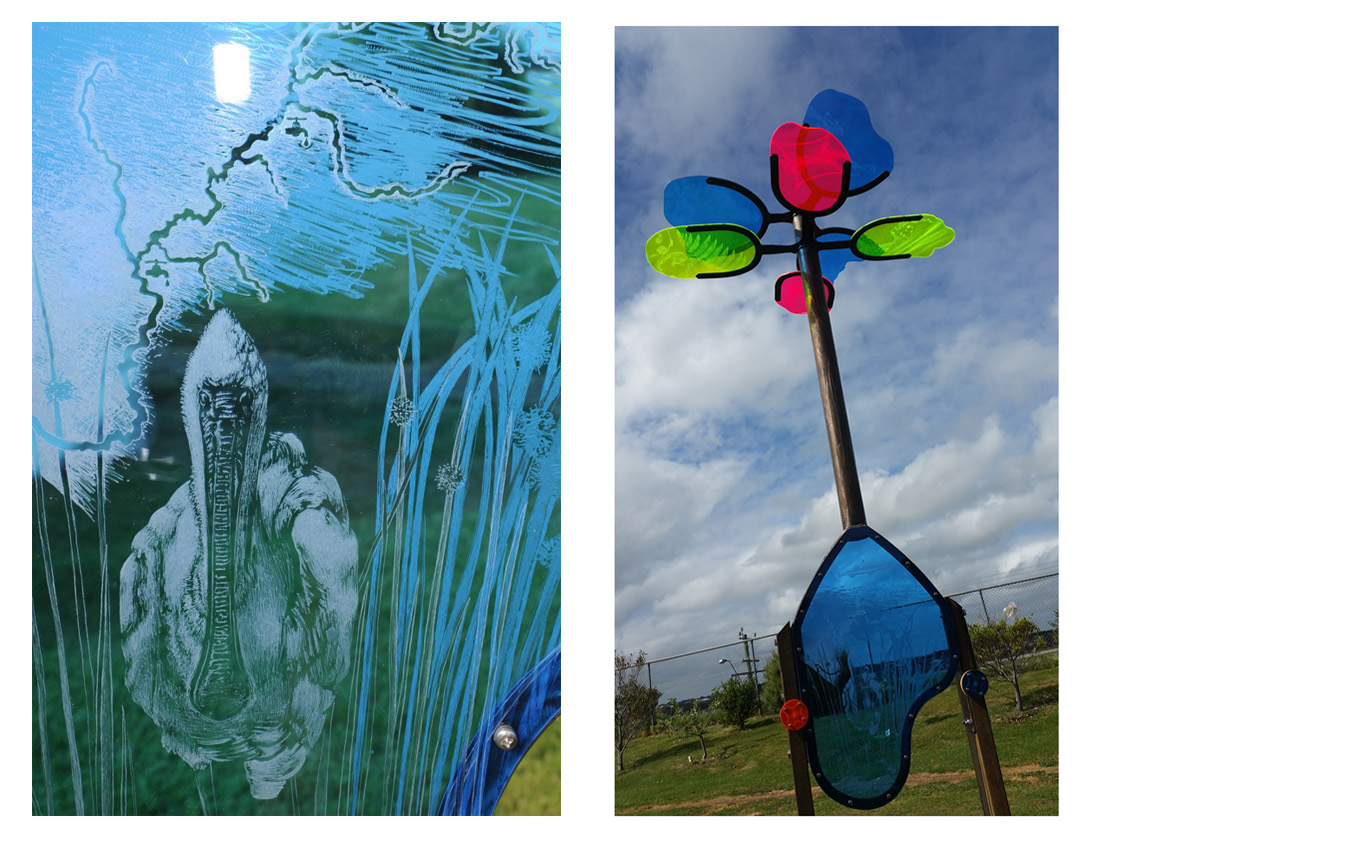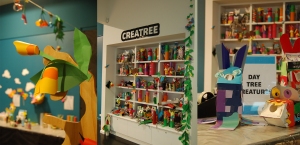Part One
In November 2016 I spent a weekend in my academic cradle, ANU in Canberra for “Thesis Bootcamp.” This critical moment pushed me to reckon with the beautiful beast of my research project. From 3pm Friday until 6pm Sunday my time was scheduled by this writing workshop. One of the coolest things about studying through ANU has been coming into close contact with some of the most brilliant minds in the country- in this case it was Inger Mewburn aka “The Thesis Whisperer” who ran the tight ship of this boot camp.
During that weekend we had to write as much as possible. It didn’t have to be the best writing, it just had to be about our research: no pressure, no pretence, just get it out. Each 5,000 words got you a little foam lego block. I churned out just over 10,000 words. My foam trophies would later sit as icons of compulsion and promise under my monitor.

All this writing crystallised the realisation that I was incredibly far from having a coherent exegesis. In spite of this, it did begin the transformation of the mass of ideas, partially formed paragraphs, and threads of meaning and concepts congesting my neural pathways since at least 2012 into an external document. Sitting next to neuroscientists and social researchers and their numerical data in the boot camp left me feeling like my visual arts research was a soft blob of fuzzy subjective conjecture. On the other hand, putting my hard fought observations into writing forced me to commit to the positions that had formed through my research. It was the beginning of making things solid, of choosing a narrative structure in spite of the inevitable partial perspective it would be.
Another reason this account starts with this weekend is because of the definition of “exegesis” provided by Inger Mewburn during that time. With a creative practice doctorate the thesis is the completed artwork which is presented for the final examination. The exegesis is the body of writing that accompanies the thesis. The function of the “exegesis” can be best understood by understanding its origins in the work of translating scripture. Translating from one language to another is not a one-to-one transaction, there are shifts and gaps that occur between language systems which displace or alter meaning. An exegesis acts as a critical account and interpretation of this process, it is an accompaniment that attempts to bridge that gap.
Without doubt the biggest cognitive burden of my research process was the exegesis that lived, breathed, and convulsed within my brain.
I do not say this with resentment. I am one of those artists who loves the theoretical (namely written) dimensions of the creative process as much as I thrive within studio.
No doubt it was in part the institutional weight of the PhD candidature and its rigorous conventions that made the unborn exegesis a mental and emotional burden. Upon reflection I can also see how the very fundamental process of translating embodied experience- felt knowledge and observation- into the particular rules of language demanded mental endurance. As a scholarly practice a scaffold needed to be generated between my own critical account of the meaning produced in my research and the ideas, theories, histories, and meanings pre-existing within culture relative to my research concerns. This sounds massive. It was. The mental space it consumed was massive too.
Ultimately the only way to expel the beast was to commit to a process of writing. Simple, right?
It took from January 2017 to February 2018 to pull it off, or out. It was a hideously long year.
There were moments of pure horror and chaos as Christmas, family visits, and school holidays coincided with the business end of writing. In the final stages I sought refuge in a friend’s vacant home for two weekends in a row. It was this uninterrupted focus that finally enabled me to complete the critical account of six years of close examination of my intersection with my environment, my intertwining with the landscape and my home.
That final period of writing was one of the most intense experiences of my life. I’d rather give birth than ever do that again. Yet just like giving birth, I would not exchange that time or the way it sculpted me anew for all the lazy Sundays in the world. The eruptions of euphoria as key ideas, observations, and concepts were finally synthesised were the richest reward.
My sister’s 40th birthday was scheduled for the weekend just after my exegesis was due. After a late night formatting the whole document I had it printed and bound in time for us to hit the road for the eight hour drive to the campground were her 40th would be held- I mean, who wouldn’t make that drive in the wake a week like that!?? (Clearly most people, but I am not most people)
The plan was post the four copies of my document to ANU from the border town of Wodonga, a day or so less in the post to make up time I’d lost in the final week.
Of course our car blew a tyre about an hour an a half from there. I don’t think I’ve ever worried less, I was on such a mental high my husband and I just giggled our way through changing the tyre like a pair of pit-lane pros on the side of the Hume Freeway. I had finally broken the enchantment that bound me to my computer and the massive piles of paper surrounding it for years, you could not bring me down.
I posted it from Benalla instead, sayonara…

By the following afternoon I was at a campground in the foothills of the Snowy Mountains with my extended family. For a brief 10 minutes I paddled my sister’s kayak out to the middle of the Snowy Hydro era lake and savoured my place in the world.
That such a critical component of my research was recognising the way we had turned the landscape inwards through our damming of such waterways to make electricity and provide clean drinking water for our homes was front of mind as I sat on the black waters of that lake.
That really cool, quiet moment in time will feed my soul forever.
Now, I was finally on the other side.
It was time to figure out how to put the river that ran through my research into material form…
Part Two
I had about six weeks to have a resolved artwork reassembled at the ANU School of Art Gallery in Canberra.
Knowing where to start was tricky.
Following from my installation test at the Warrnambool Art Gallery in early February I knew that I would be somehow weaving my collection of little “warm safe houses” into a matrix of PVC pipe built to fit the mathematical dimensions- read: metaphor for the material/physical conditions of my research site- from my kitchen sink to my ensuit.
Art making is problem solving through materials. And it’s the little, very material things about materials that sit at the nub of this: which specific PVC pipe materials would I need? How many lengths of pipe? How many fittings? What kind of fittings? How would I adhere my boxes to these pipes? How would I manage the construction of this form in the central walkway of my home?
If I was a different kind of person I could have perhaps extrapolated the answers to these questions abstractly by measuring the space, imagining and precisely drawing the ideal “river” form to occupy that space and then methodically working out exactly which PVC bits would be required. This would no doubt be more efficient.
But if I was that kind of person I would be doing a PhD in Engineering not Visual Art. I think with my hands in response to things as they exist in space. The only way to figure this one out was to begin to play.
I went on-line to scope out the types of fittings that were out there. Ideas began to form.
I went to Bunnings to see what I could source immediately. I returned with small 45o & 90o elbows and a few T-joins. Using pipes from my earlier art gallery test I “drew” the linear form of a breaking wave at my ensuite and bedroom entry, a river mouth opening out. This gave me a sense of how things might go.
Following this I prepared a bulk order with an online plumbing supplier. I also dropped back out to Bunnings and bought the makings of the central “spine” (which an ANU Lecturer, upon seeing the whole exhibited work in Canberra later that month, aptly referred to as “That Big Mother-Fucker”) which would house the sound system on which the sample of my dying washing machine would be played.
I played with the remaining bits I had on hand as I waited, and waited, for my on-line order to arrive.
During this wait I completed the final stages of my “warm safe house” series. These boxes combined fabric, painted town planning maps, and photographs taken during my examination of my domestic space. I printed some of these photographs onto transparent sheet and layered them across the acrylic windows on a number of the boxes.
The last step was painting a series of icons onto about 25 of the boxes. The rationale behind incorporating these images was to document the effects of “habitual perception” witnessed throughout my research. I had observed how repeated and predictable encounters with particular facets of the everyday obscure the world’s “phenomenological depth”- i.e. we don’t need to see objects like the milk carton or sites like the shower or the concrete gutter outside our homes for anymore than what they serve in the given moment of our interaction. This is one of the ways that our everyday world’s become ordinary- and yep, this is why there is an exegesis accompanying this work…
I chose milk cartons, washing baskets, shopping bags, the kitchen tap, and the gas meter as the icons of habitual perception that intersect our gaze and adhere it to the surface of life.
As I finished painting the last of these I began to freak out that three weeks on from placing my on-line order it was still yet to arrive.
I really had attempted to not leave this all to the last minute.
With just ten days until I was due to leave for Canberra, and after about 400 distressed phone calls and emails, my missing freight was located.
At last I could properly begin.
Could I pull this off?
I “knew” what kind of form I needed to create. I knew it had to be really, really special. I was terrified that it might be almost great. I realised that pushing it beyond “almost” great would require non-stop effort, an incredible amount of materials, and the patience of my family within whose home this form would finally emerge.
The process of creating Oikos was an all absorbing dance. An interaction of making and responding through which the final form grew organically in response to the myriad parameters of its creation. A wonderful synchrony emerged between my body and the forming artwork, between my hands, eyes, materials, my home, and my ideas.
I began by placing “The Spine”- “The Big Mother-Fucker” drain pipe – in its central position and then created an outer boundary on either side using a combination of 40mm & 50mm pipes. This create a sturdy, thick framework which would allow the whole conglomeration to stand unsupported once it was in the gallery space. From here I built in sections which allowed me to only partially block the epi-centre of my home over the course of the week.
I created a solution for mounting the boxes by screwing PVC plumbing caps to them so the pipes could be plugged into them. Bless my husband’s cotton socks, he graciously helped with this time consuming job…. and bless the cordless drill who, with the right drill bit, sped the process up considerably.
Oikos took over my house. Given that this was the final stage in a long research process centred in my home it was fitting that the material form of my research should spill out and consume the domain of my family life.
Little by little, night by night, day by day (9am-3:30pm) it grew….
The best accompaniment to these photographs is the words from the final chapter of my exegesis:
“Constructing Oikos to my home’s dimensions will require me to transiently block the entrances between my kitchen, lounge, bedroom, and bathroom. This will disrupt the metabolism of this domestic organism by restricting movement of the embodied subjects whose aesthetic entanglements in this space regulate entropy and order within it. This intervention will briefly collapse the distinction between art and the everyday critiqued through this research while enabling deliberation on these objectified practices within the ordinary space in which they operate.”
“Even as energy and food circulate continuously through an ecosystem some energy always dissipates in the form of warmth.[1] Heat is directly tied to entropy.[2] Heat indicates the amount of disorder and net energy loss within a system. As warmth emanates from a given system or object it is as though it becomes fused with temporal-space. Perhaps the transient warmth I observed within the home is a product of the entropy we seek to delay. Perhaps warmth stretches out and fuses our subjectivities to the world like the webbing that Shiota weaves through space. The final form that Oikos takes within the School of Art Gallery will attempt to make tangible these processes through which entropy and renewal entwine in and activate materials to generate the embodied warmth and transient stability our of internal worlds.”
[1] Capra, F. (1997). The Web of Life. Glasgow: Flamingo: 48
[2] Baker, J. (2007). 50 Physics Ideas you really need to know. London: Quercus Publishing Plc: 36-39
And then, one Friday afternoon, just before school pick-up the day before I was meant to leave for Canberra, it was finished.
The dance between shapes, and lines, and angles, and textures, and ideas was done. She was done. Oikos was made.



















